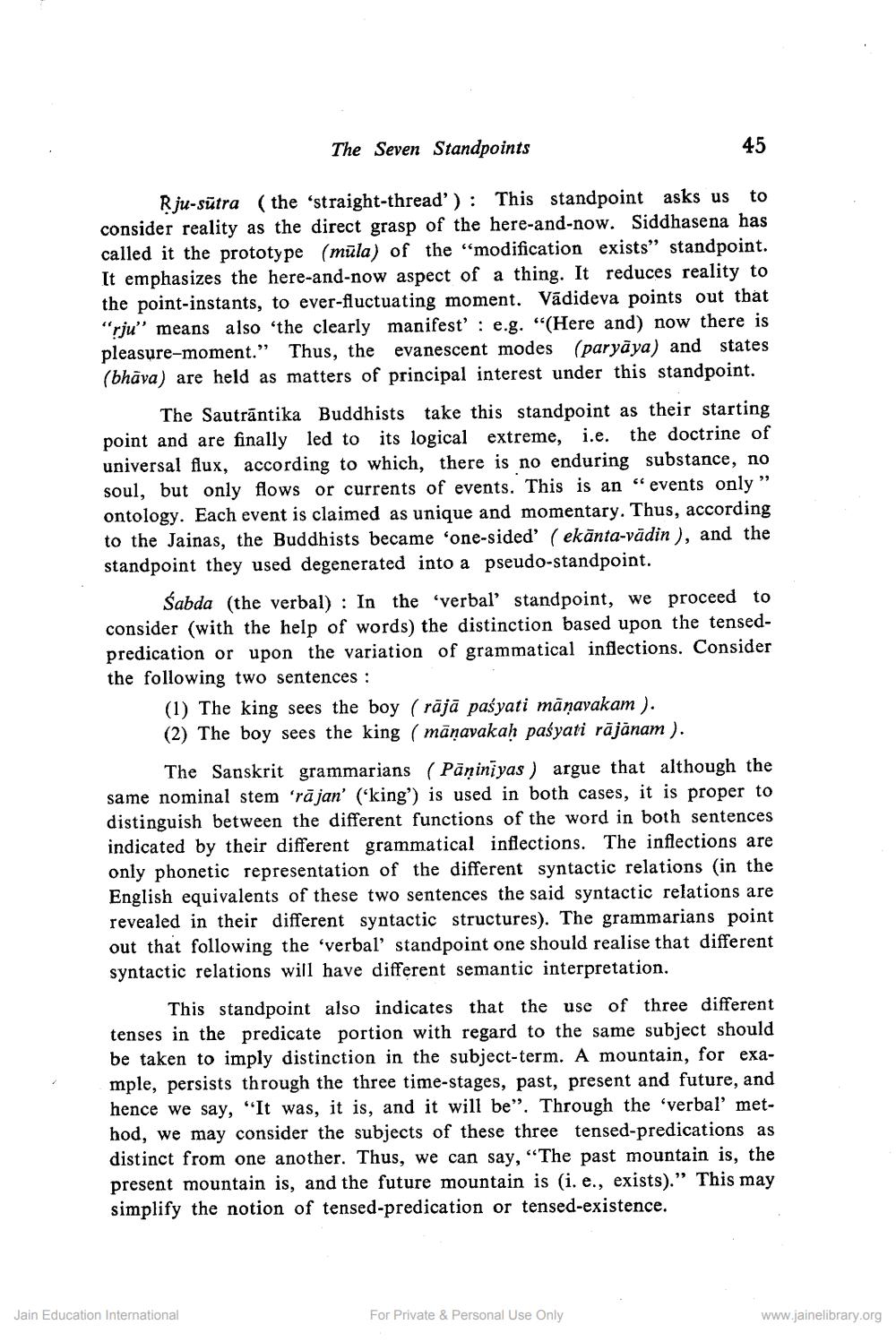________________
The Seven Standpoints
Rju-sūtra (the 'straight-thread'): This standpoint asks us to consider reality as the direct grasp of the here-and-now. Siddhasena has called it the prototype (müla) of the “modification exists” standpoint. It emphasizes the here-and-now aspect of a thing. It reduces reality to the point-instants, to ever-fluctuating moment. Vādideva points out that "rju' means also 'the clearly manifest' : e.g. "(Here and) now there is pleasure-moment." Thus, the evanescent modes (paryāya) and states (bhāva) are held as matters of principal interest under this standpoint.
The Sautrāntika Buddhists take this standpoint as their starting point and are finally led to its logical extreme, i.e. the doctrine of universal flux, according to which, there is no enduring substance, no soul, but only flows or currents of events. This is an “events only ” ontology. Each event is claimed as unique and momentary. Thus, according to the Jainas, the Buddhists became 'one-sided' ( ekānta-vādin ), and the standpoint they used degenerated into a pseudo-standpoint.
Sabda (the verbal): In the 'verbal' standpoint, we proceed to consider (with the help of words) the distinction based upon the tensedpredication or upon the variation of grammatical inflections. Consider the following two sentences :
(1) The king sees the boy ( rājā paśyati māņavakam ). (2) The boy sees the king ( māṇavakah paśyati rājānam ).
The Sanskrit grammarians (Pāṇiniyas) argue that although the same nominal stem 'rā jan' ('king') is used in both cases, it is proper to distinguish between the different functions of the word in both sentences indicated by their different grammatical inflections. The inflections are only phonetic representation of the different syntactic relations (in the English equivalents of these two sentences the said syntactic relations are revealed in their different syntactic structures). The grammarians point out that following the 'verbal' standpoint one should realise that different syntactic relations will have different semantic interpretation.
This standpoint also indicates that the use of three different tenses in the predicate portion with regard to the same subject should be taken to imply distinction in the subject-term. A mountain, for example, persists through the three time-stages, past, present and future, and hence we say, "It was, it is, and it will be". Through the 'verbal method, we may consider the subjects of these three tensed-predications as distinct from one another. Thus, we can say, "The past mountain is, the present mountain is, and the future mountain is (i. e., exists).” This may simplify the notion of tensed-predication or tensed-existence.
Jain Education International
For Private & Personal Use Only
www.jainelibrary.org




